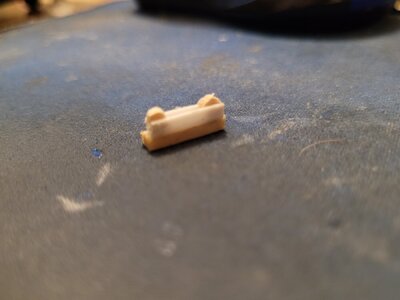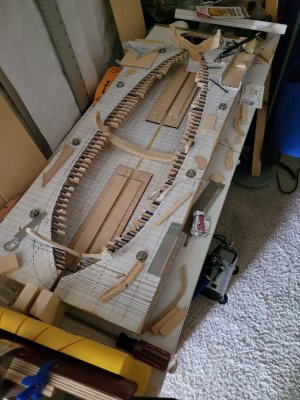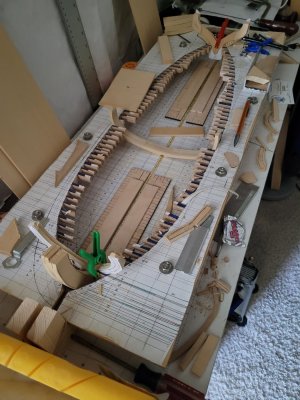Hello everyone. I haven't forgotten about this project, despite some inconvenient changes in circumstances. I've had to temporarily shelve Brig Eagle because of change in housing situation and many of my tools had to be put in storage for a few months. However, I am still doing lots of research and making frame templates for this model to work on once housing situation improves. Lately, I've been doing additional comparisons of different ships, this time the American brigs Syren and Oneida. Syren seems more like Brig Eagle in deck layout and overall hull contours (even though Eagle is 20 ft longer than Syren and Syren was a deep water hull with additional deck including European ships HMS Blandford and Le Cygne), whereas Oneida would be more followed for rigging and was also a "shallow draft" hull design with just only berthing deck and gun deck like the Eagle was and Niagara. However, I found one article interesting about Oneida saying she was a slow performer under sail, I am guessing that she may have been top heavy for a ship her size. Will have to do more digging around work schedules.













